 Logan Wade
.
October 05, 2022
.
Department
Logan Wade
.
October 05, 2022
.
Department
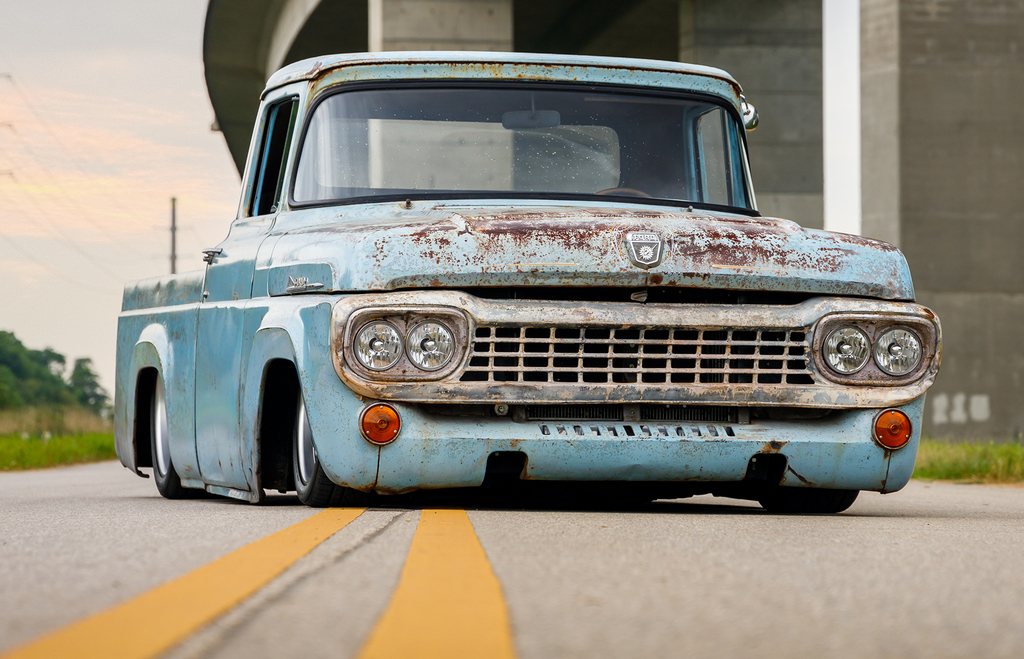
Justin Nevius of Junction City, Kentucky, has been around custom vehicles his entire life. He purchased this 1958 Ford F-100 back in 2014 as his first project truck.
“When I purchased the truck, it was just a cheap cruiser, but I loved it,” he says. “Unfortunately, over the next few years, the truck became pretty rough and was in serious need of a rebuild.”
It didn’t take long before Justin was ready to dig into the build and make it truly his own. He says he wanted to build a ’bagged truck since he was 16.
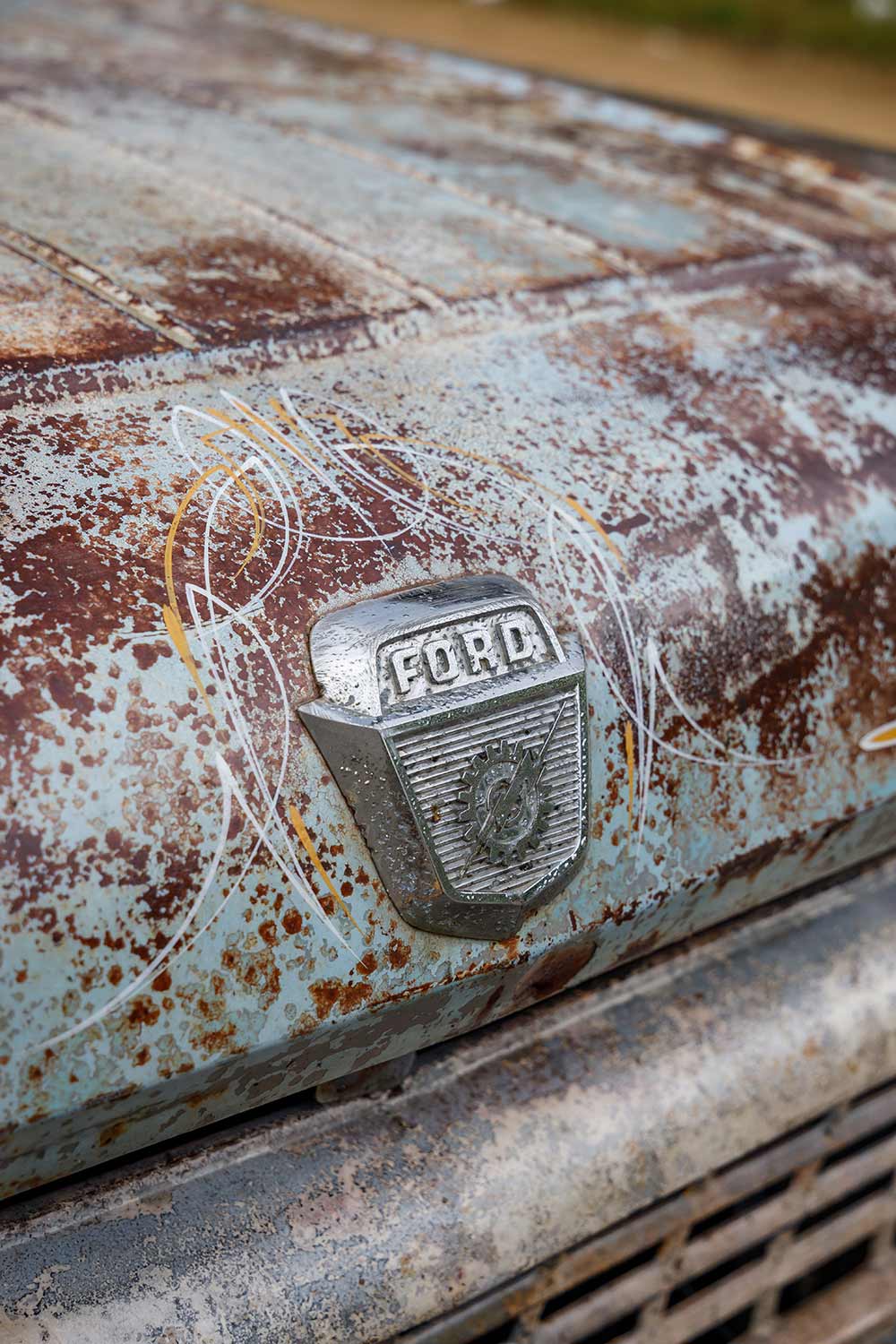
This build took off when Justin met Chris Cooper, the owner of The Flamingo Lounge and Rods in Harrodsburg, Kentucky. What Justin didn’t realize was just how quick his old truck would turn into something he had only dreamed about.
Justin dropped off the truck with Chris in 2018 so he could get started bringing life back into the truck. This would be an entire rebuild project all the way down to the frame.
My favorite part of the truck is the truck itself. You just don’t see many of the 1957-1960 F-100s.
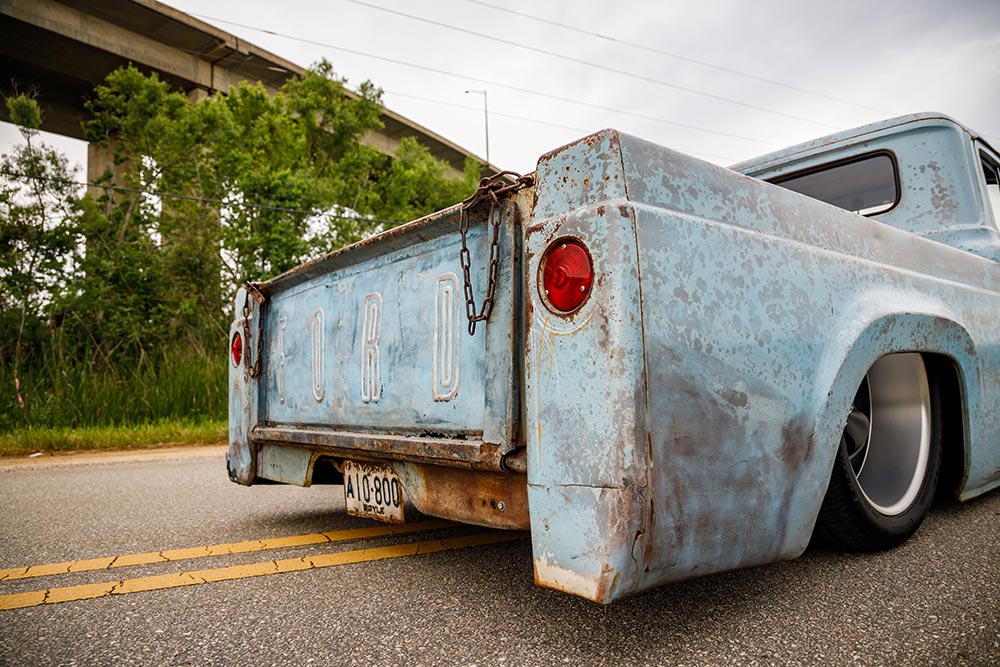
The truck is now sitting on a Chevrolet S-10 frame that has been C-notched to get the truck to lay on the ground. Chris had to fabricate custom body mounts to get the F-100 body to line up perfectly. As Justin wanted nothing but the best, Chris installed a Thorbros 4-link along with Ridetech strong arms and Proforged steering. Airlift airbags were installed in the front and rear along with Monroe shocks. With most of the air-ride components bolted up, it was time to get the Accuair E-Level installed and dialed in. Justin wanted to be able to lay this thing all the way on the ground, so Chris was in for a challenge!
Unfortunately, Justin ran into a few problems during the building process.
The main problem, he says, is that “they don’t make parts for these trucks anymore. So, my biggest issue with the build was finding parts and making it work with what we had.
“A lot of the parts had to be made from scratch. We also searched tons of swap meets to find what we needed.”
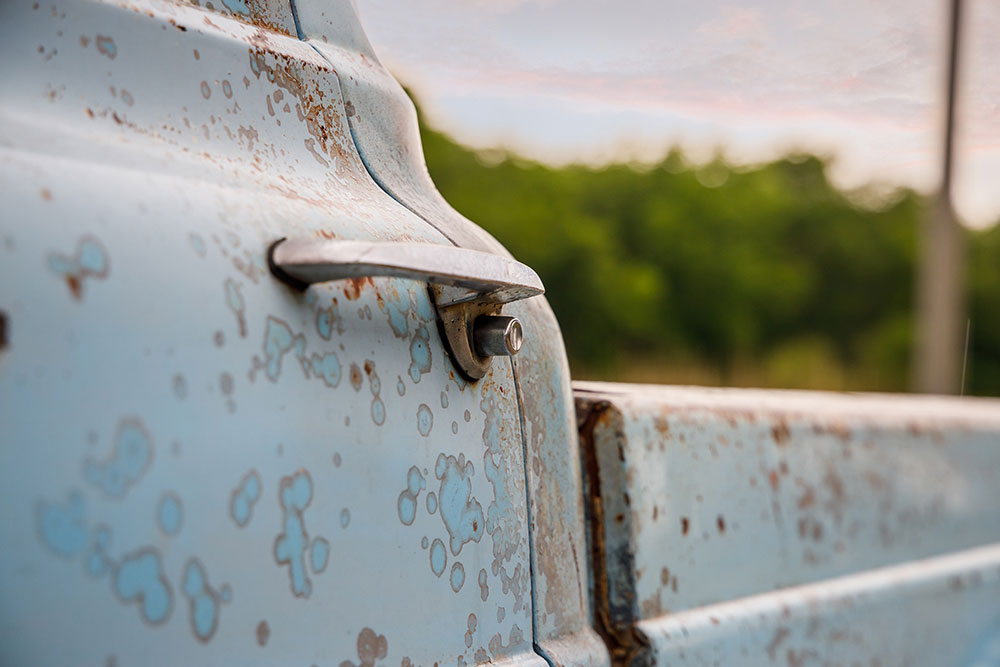
The original fuel tank was removed, and a 14-gallon Tanks Inc. fuel tank was bolted up. Justin purchased a set of staggered Coys C5 Wheels, 18×8 in the front and 20×10 in the rear. Wrapped in Continental ExtremeContact tires, this truck rides super smooth as it skates down the interstate just inches off the ground, and boy do the tires tuck hard when he lays it out!
After most of the chassis work had been completed, they moved on to the exterior. The entire exterior of the truck is all original, even down to the grille.
They added a custom hardwood bed that lifts, and the blue patina paint on this F-100 really sets this truck apart from other trucks. To Justin, “the truck itself is the most unique feature about the build,” he says. “You don’t see many people building ’57-’60 F-100s.”
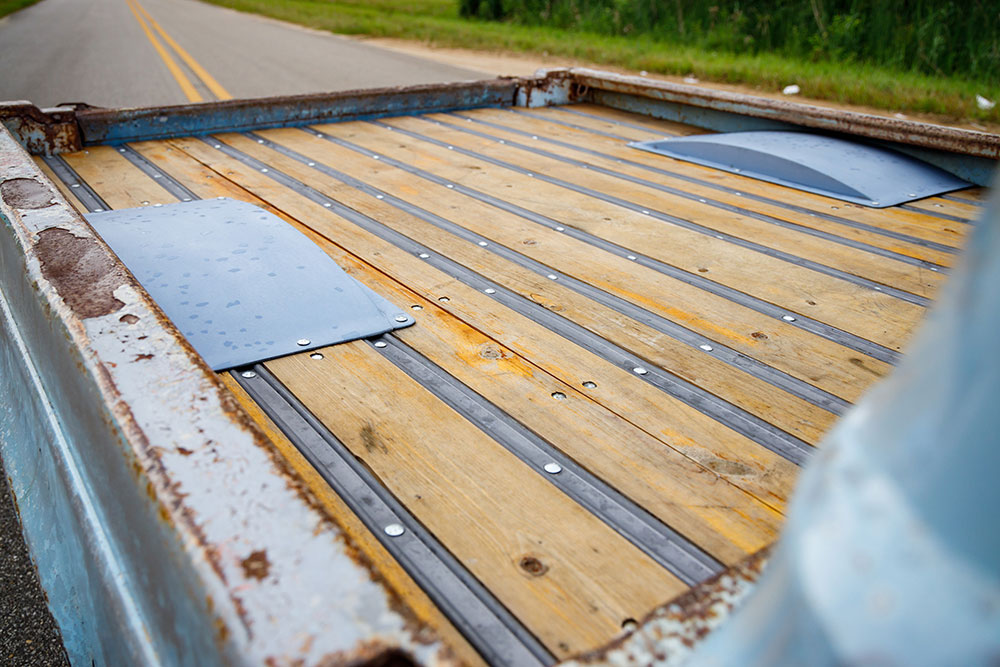
Justin then installed a set of Holder’s Hotrods wheel tubs. Wanting to add a few more custom touches, Justin called up his friend Kirby Stafford in Danville, Kentucky. Kirby laid down some awesome pinstriping on the dash and several of the exterior panels.
With the air-ride and chassis complete, next up was the engine and drivetrain. Under the hood is a massive 1996 Chevrolet 350 V-8. They used a set of S-10 motor mounts, which made the entire process of bolting this big V-8 up in the truck super easy. Justin also removed the original carburetor and installed a Holley 600cfm carb to give this truck a little more power. He also upgraded to an HEI ignition. A custom 2.5-inch exhaust system was welded up under the truck as well as a set of stainless MagnaFlow mufflers that really make this truck sound as aggressive as it looks!
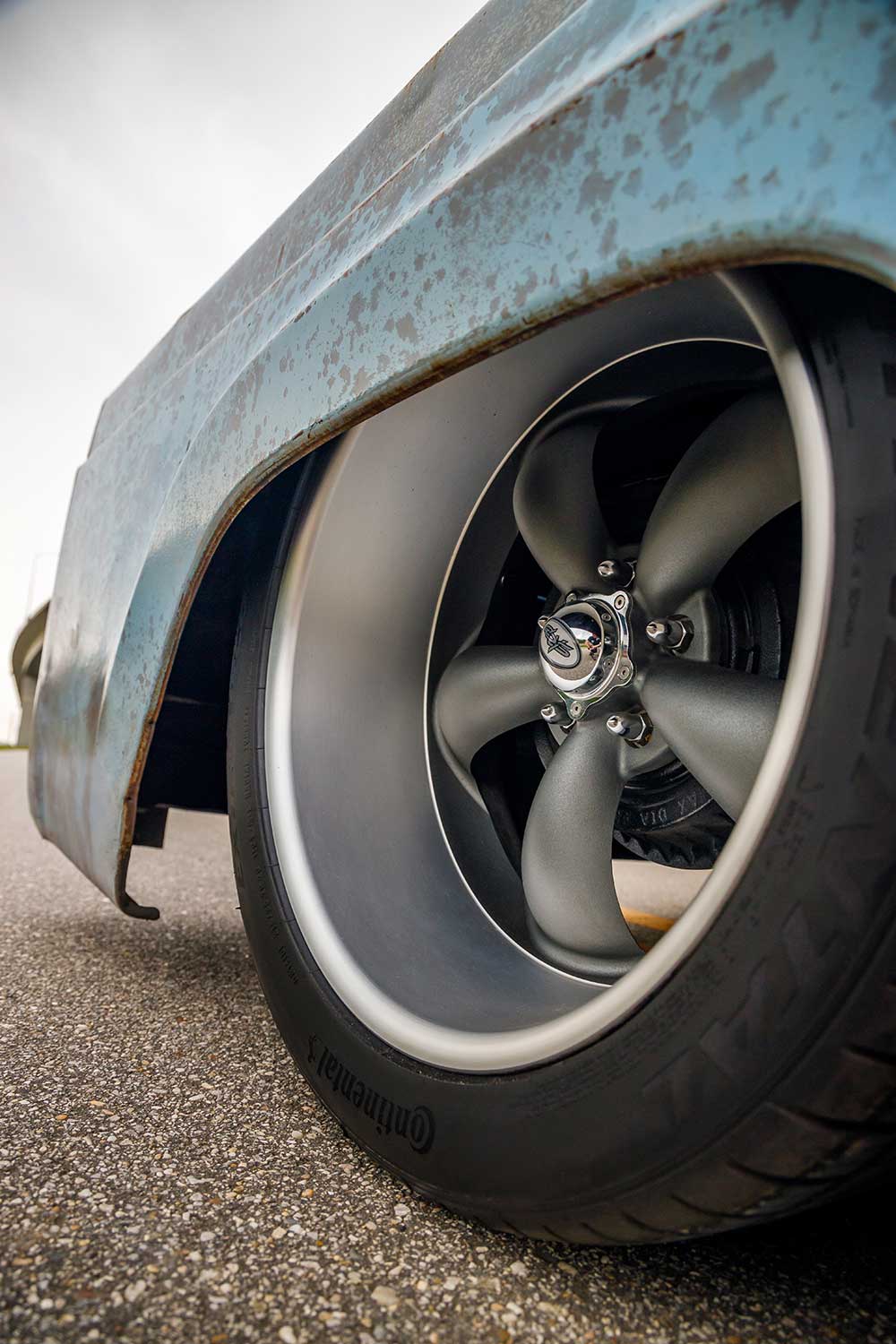
The 1987 700R transmission holds up well to the power the mighty Chevy 350 puts down. Under the rear of the truck is a 1991 10-bolt Chevy S-10 drive axle as well as S-10 brakes in the front and rear. Justin upgraded to an 8-inch CPP brake booster and master cylinder. Justin then installed a Lokar shifter to match the theme of the interior.
Justin was determined to make this truck truly something custom. He never thought he would have the chance to build something of this caliber.
“I have always wanted a ’bagged truck,” he says. “There is just something about an old truck laying rocker, tucking some big wheels. It’s just cool.”
Justin was able to take this ol’ Ford and create a Recycled Opportunity.
With most of the exterior modifications complete, Justin moved to the interior of the truck—and he knew just who to call. He took the truck to Jonas Taulbee and Erik Demonbreun at Auto Kustoms in Harrodsburg, Kentucky.
Jonas and Erik created an amazing custom bench seat wrapped in distressed brown vinyl. They then built some custom door panels wrapped in the same distressed brown vinyl to match the bench seat. The F-100’s doors had to be rebuilt using a combination of Dennis Carpenter and LMC parts.
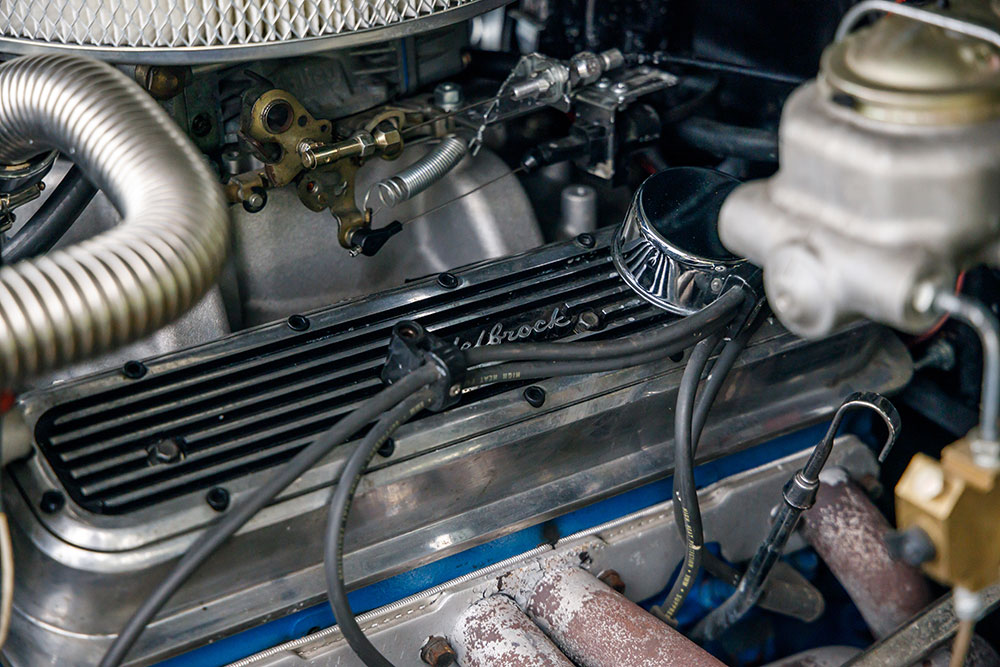
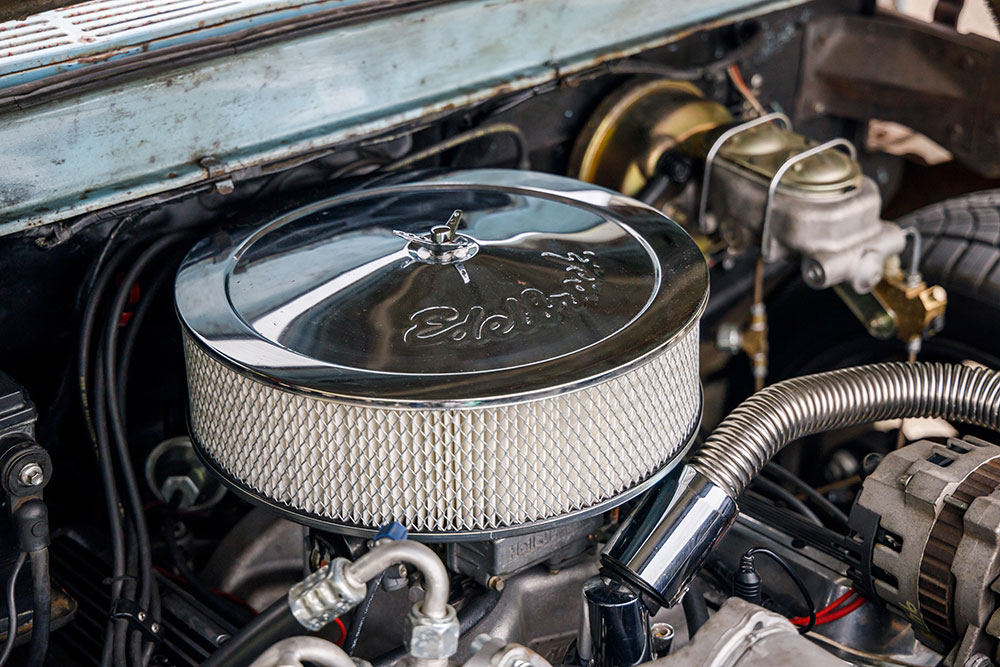
The ’58 dash received several upgrades. All new Dakota Digital VHX gauges were installed as well as a 15-inch Speedway 40 Ford steering wheel. Justin knew he was going to cruise this truck everywhere he could, so installing Vintage Air was the final step in completing his build.
With the truck finished, Justin was finally able to get the truck out on the open roads. The entire build took a little over a year to complete.
What are the different conditions and corresponding values for a 1958 Ford F-100 1/2 Ton?
When it comes to the 1958 Ford F-100 1/2 Ton, there are several variants and conditions to consider. Below is a detailed breakdown of the different configurations and their corresponding values for models in #3 condition.
For a clear overview, here’s a quick reference:
This comprehensive evaluation ensures you have all the necessary information to understand the different conditions and values for the 1958 Ford F-100 1/2 Ton.
What are the different body styles available for the 1958 Ford F-100 1/2 Ton?
When exploring the 1958 Ford F-100 1/2 Ton, you’ll find several distinct body styles designed to cater to different needs and preferences. Here’s a breakdown of what you can choose from:
No matter which body style you choose, the 1958 Ford F-100 1/2 Ton offers versatility and classic appeal for both work and leisure.
What are the wheelbase measurements for the 1958 Ford F-100?
When evaluating the 1958 Ford F-100, understanding its dimensions, particularly the wheelbase, is crucial. The wheelbase refers to the distance between the front and rear axles of the vehicle, influencing its stability, ride quality, and overall handling.
Each wheelbase option can affect the truck’s driving dynamics, so selecting the appropriate one based on your needs is essential.
How does the 1957 Ford F-100 compare to other trucks like the 1955 Chevrolet Cameo in terms of design and pricing?
The 1957 Ford F-100 brought several groundbreaking changes to the truck market. Unlike prior models, it introduced the industry’s first all-steel, full-width pickup box, a feature that became standard. This innovation set it apart from competitors, especially the 1955 Chevrolet Cameo, which had fiberglass fenders over a traditional cargo box.
In summary, the 1957 Ford F-100’s robust, all-steel design combined with its accessible pricing made it a standout option compared to the more expensive and differently styled 1955 Chevrolet Cameo.
What features and innovations did the 1957 Ford F-100 introduce?
The 1957 Ford F-100 was a groundbreaking truck for a couple of key reasons. First and foremost, it introduced the industry’s first all-steel, full-width pickup box, setting a new standard for durability and functionality. This feature came as standard equipment, making advanced design accessible to the average buyer.
Another significant development was the truck’s modern styling. Unlike its predecessors, the 1957 F-100 featured upright, squared-off lines complemented by a wrap-around windshield. This new look wasn’t just about aesthetics; it incorporated practical elements like a “Driverized Cab” with an integral step and front fenders, enhancing both ease of access and driving experience.
For those who preferred a more traditional look and extra cargo space, the Flareside step-sided box remained an option. This variety allowed buyers to choose a truck that best suited their individual needs—whether for work or style.
Additional advancements came in subsequent years but were part of the same generation. By 1959, the F-100 offered optional factory-installed four-wheel drive, eliminating the need for third-party conversions. This model also saw the introduction of a redesigned front bumper, which remained in use until 1979. The final year of this generation, 1960, brought updates like a new grille structure and hood design.
In essence, the 1957 Ford F-100 didn’t just carry cargo; it carried forward-thinking design and functionality into the realm of pickup trucks. Whether through its all-steel box, modern styling, or practical features, this truck left a lasting impact on the industry.
How was the 1957 Ford F-100 received by the public and critics at the time of its release?
When the 1957 Ford F-100 hit the market, initial responses from both the public and critics were less than flattering. Many people mockingly compared the truck to a moving refrigerator, suggesting its design was too boxy and utilitarian for their tastes.
However, as time passed, opinions shifted dramatically. What was once ridiculed as an uninspired design eventually garnered appreciation. Critics and enthusiasts came to view the 1957 F-100 as a groundbreaking model that marked a new chapter in pickup truck aesthetics. This shift in perception highlighted its avant-garde design cues that were perhaps too advanced for its time but later recognized as iconic.
How did the design of the Ford F-100 evolve from 1957 to 1960?
The Ford F-100 underwent significant design changes between 1957 and 1960, marking notable advancements in both style and functionality.
In 1957, the Ford F-100 introduced several groundbreaking features. It was the first in the industry to offer an all-steel, full-width pickup box as standard equipment. This modern styling approach was more accessible to everyday workers, providing a durable and practical option. Additionally, despite the availability of the more traditional Flareside step-sided box, the innovative design of the F-100 set a new standard.
By 1958, while the primary design remained consistent, Ford incorporated upright, squared styling coupled with a wrap-around windshield, marking a significant departure from previous models. The “Driverized Cab” introduced integral steps and front fenders, enhancing both accessibility and aesthetics. One notable update this year was the addition of four headlights, aligning with industry trends, though other aspects saw minimal modifications.
The year 1959 brought more practical enhancements to the F-100. Ford began offering a factory-installed four-wheel-drive option, a feature that previously required aftermarket conversions. This period also saw the introduction of a redesigned front bumper, which remained in production until 1979, cementing its iconic look for years to come.
The final year of this generation, 1960, presented the F-100 with a new grille structure and hood design, refining its visual appeal. These updates concluded the aesthetic and functional advancements that had begun in 1957, preparing the model for the next significant redesign in 1961.
Between 1957 and 1960, the Ford F-100 transitioned from a groundbreaking, all-steel pickup to a refined and functionally enhanced vehicle. Each year’s updates contributed to the model’s durability, style, and practicality, reflecting broader industry trends and setting new standards in pickup design.
What are some notable past sales of the 1957-1960 Ford F-Series, including sale prices and locations?
If you’re looking into the historical sales of 1957-1960 Ford F-Series trucks, here are some noteworthy transactions:
These sales provide a snapshot of the market for vintage Ford F-Series trucks, highlighting a range of prices driven by factors like mileage, transmission type, and geographic location.
When did Ford start offering factory-installed optional four-wheel drive for the F-100?
Starting in 1959, Ford began offering factory-installed optional four-wheel drive for the F-100. Before this, those seeking four-wheel drive capabilities had to rely on aftermarket conversions, which were often less seamlessly integrated and more prone to issues.
To summarize the evolution leading up to this offering:
By 1959, the option for factory-installed four-wheel drive marked a significant step forward in making the F-100 more versatile and capable right from the dealership floor.
What was the significance of the “Driverized Cab” in the 1957 Ford F-100?
The “Driverized Cab” introduced in the 1957 Ford F-100 was a significant innovation for several reasons. This design featured a more upright, squared styling that set it apart from previous models. One of its standout characteristics was the wrap-around windshield, which enhanced visibility and safety for the driver.
Additionally, the “Driverized Cab” included an integral step, making it easier and more convenient to access the vehicle. This was a thoughtful touch that showed a clear focus on driver comfort and ergonomics. Lastly, the integration of the front fenders into the cab’s design not only provided a sleeker appearance but also contributed to the vehicle’s overall structural integrity.
In summary, the “Driverized Cab” brought together enhanced visibility, improved driver ergonomics, and a more cohesive design, marking a significant evolution in truck design during that era.
What is the highest and lowest sale price for the 1957-1960 Ford F-Series?
When looking at the market for the 1957-1960 Ford F-Series, you’ll find a significant range in sale prices.
This wide disparity reflects the varying conditions, restorations, and specific features of each vehicle.
What additional resources are available for auction reports and market analysis of classic cars?
When diving into the realm of classic cars, it’s essential to have access to reliable and comprehensive resources. Below are some top-tier resources you can turn to for in-depth auction reports and market analysis:
Keep these resources at hand to stay ahead in the classic car market, ensuring you make informed decisions when buying or selling.
What were the major differences between the Flareside and Styleside pickup boxes?
The major differences between the Flareside and Styleside pickup boxes revolve around their design and practical applications.
In summary, while the Flareside option is perfect for those who value classic design and easy access, the Styleside is geared towards buyers needing more cargo space and a modern, unified look.
How can I find more values and prices for other classic cars, trucks, vans, and motorcycles?
When you need to find values and prices for a variety of classic vehicles, there are several reliable resources you can turn to. Here’s a step-by-step guide to help you navigate this process:
By leveraging these resources, you’ll have a comprehensive view of the market and a better understanding of what to expect when buying or selling classic cars, trucks, vans, and motorcycles.
What are the specifications of the 1958 Ford F-100 1/2 Ton (engine type, horsepower, etc.)?
Under the hood is a massive 1996 Chevrolet 350 V-8. They used a set of S-10 motor mounts, which made the entire process of bolting this big V-8 up in the truck super easy. Justin also removed the original carburetor and installed a Holley 600cfm carb to give this truck a little more power. He also upgraded to an HEI ignition. A custom 2.5-inch exhaust system was welded up under the truck as well as a set of stainless MagnaFlow mufflers that really make this truck sound as aggressive as it looks!
The 1987 700R transmission holds up well to the power the mighty Chevy 350 puts down. Under the rear of the truck is a 1991 10-bolt Chevy S-10 drive axle as well as S-10 brakes in the front and rear. Justin upgraded to an 8-inch CPP brake booster and master cylinder.
While this build is a modern marvel, it’s essential to appreciate where it all began. The 1958 Ford F-100 1/2 Ton originally came equipped with:
These specs laid the foundation for a truck that has stood the test of time, both on the road and in the hearts of automotive enthusiasts.
This blend of vintage charm and modern performance showcases the best of both worlds, making this truck a true standout.
What equipment and features were available in the 1958 Ford F-100?
“Under the hood is a massive 1996 Chevrolet 350 V-8. They used a set of S-10 motor mounts, which made the entire process of bolting this big V-8 up in the truck super easy. Justin also removed the original carburetor and installed a Holley 600cfm carb to give this truck a little more power. He also upgraded to an HEI ignition. A custom 2.5-inch exhaust system was welded up under the truck as well as a set of stainless MagnaFlow mufflers that really make this truck sound as aggressive as it looks!
The 1987 700R transmission holds up well to the power the mighty Chevy 350 puts down. Under the rear of the truck is a 1991 10-bolt Chevy S-10 drive axle as well as S-10 brakes in the front and rear. Justin upgraded to an 8-inch CPP brake booster and master cylinder. Justin then installed a Lokar shifter to match the theme of the interior.
The 1958 Ford F-100 came with a variety of features that made it a standout in its time. It boasted a wheelbase of 110 or 118 inches, providing a solid foundation for its robust design. The truck was originally equipped with a straight-six or V8 engine, depending on the buyer’s preference. These engines were known for their durability and reliable performance. The F-100 also featured a sturdy frame and suspension system, designed to handle heavy loads and rough terrain, making it a favorite among farmers and tradespeople.
Inside, the F-100 offered a no-nonsense, utilitarian interior. The bench seat could comfortably accommodate three passengers, and the dashboard was straightforward, featuring basic gauges and controls. This simplicity was part of its charm, appealing to those who needed a dependable workhorse without unnecessary frills.
While Justin’s modifications have significantly modernized this truck, it’s important to appreciate the solid foundation that the 1958 Ford F-100 provided. The original features laid the groundwork for the impressive enhancements that bring this classic truck roaring into the modern era.”
Share Link